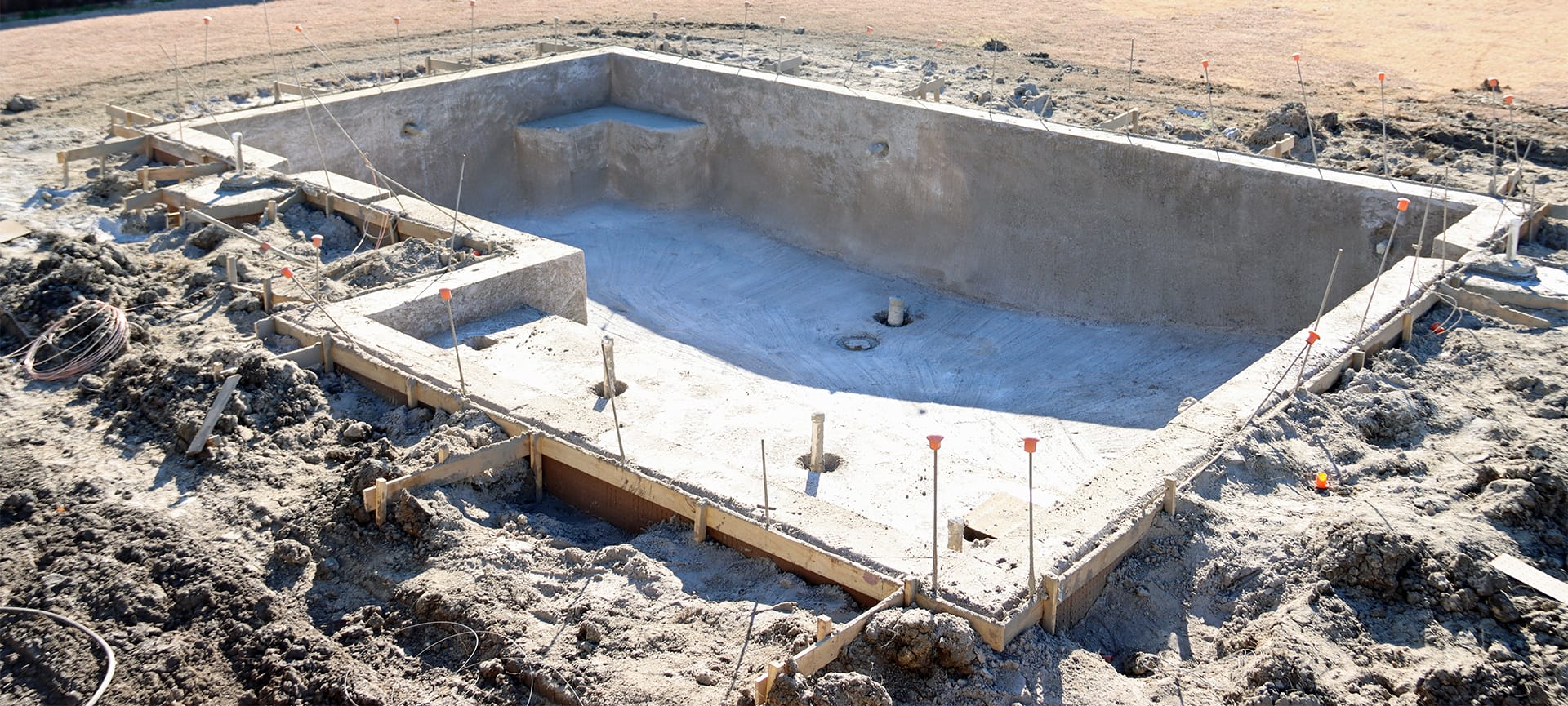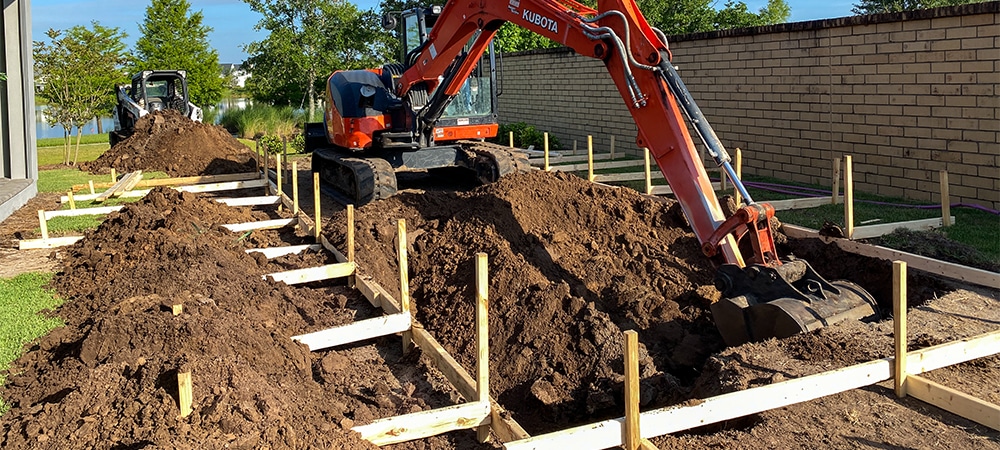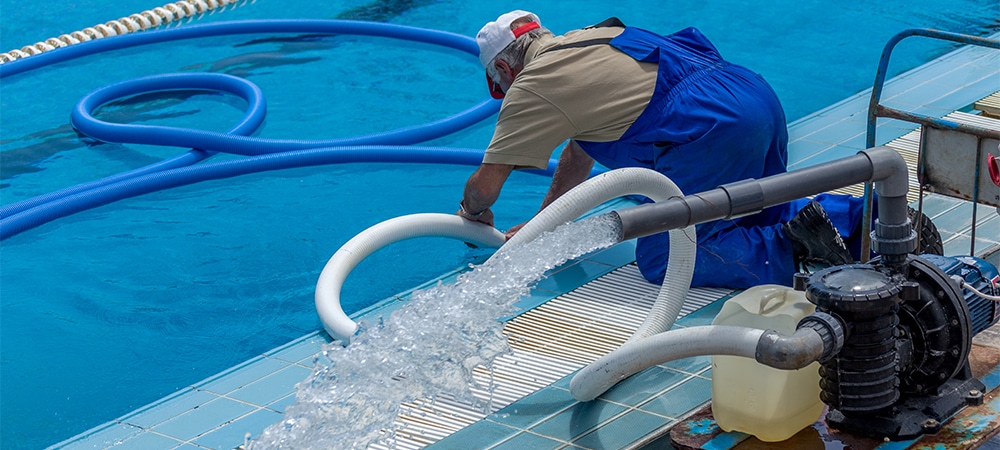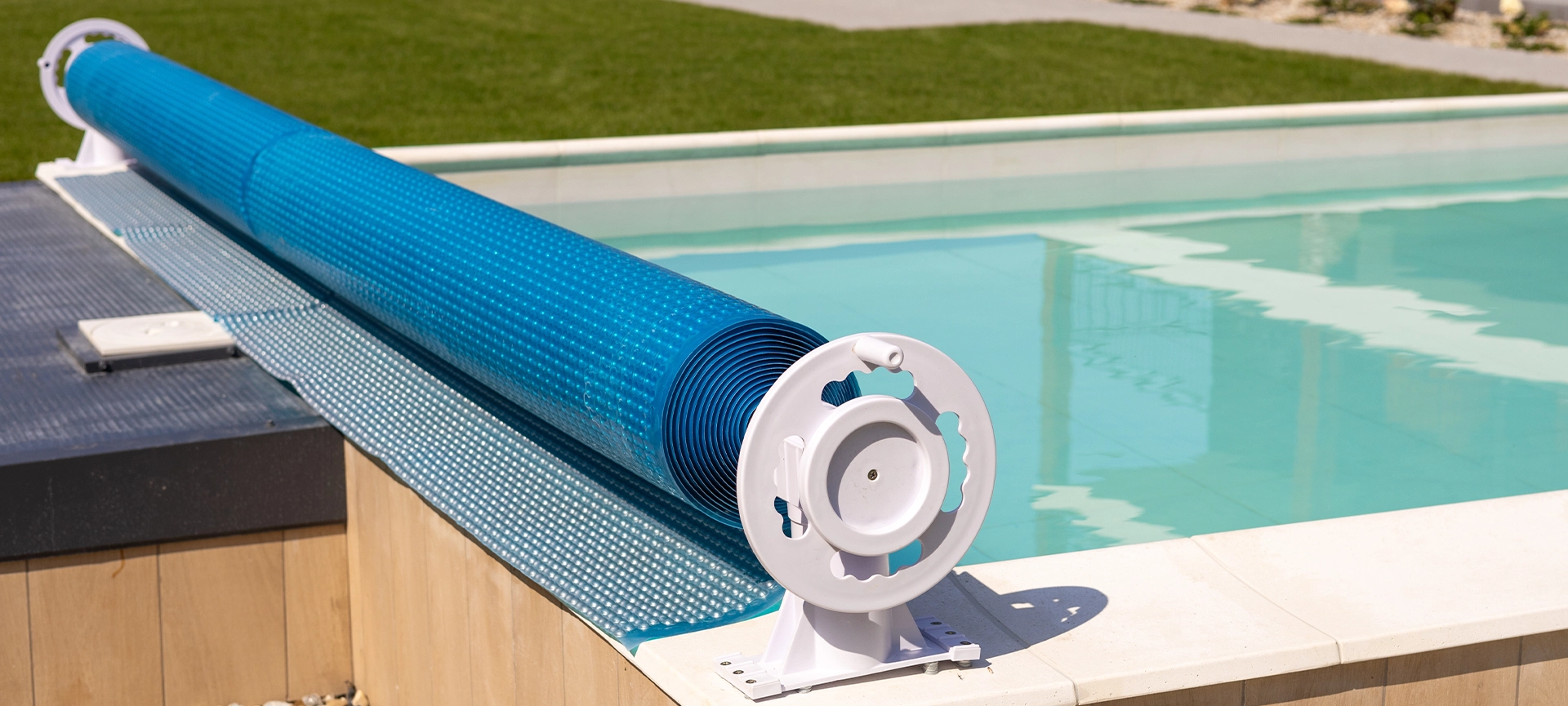
A backyard pool is a luxurious addition that enhances a home’s value, provides a private retreat, and serves as a hub for recreation. However, before diving into the specifics of building a pool, understanding the pool construction cost involved is essential.
The pool construction cost varies based on factors such as size, material, design, and additional features. This guide breaks down the expenses associated with pool construction to help homeowners make informed decisions.
Related Article: Step-by-Step Pool Restoration Process
Factors Influencing Pool Construction Cost
Several factors determine the overall pool construction cost, from the type of pool to the materials used and additional features. Understanding these factors helps homeowners plan their budget effectively and make informed decisions. Below, we break down the key elements that influence the cost of building a pool.
Type of Pool
The type of pool you choose significantly impacts the overall cost. Here are the most common options:
- Inground Pools ($40,000 – $100,000+) – The most expensive option, but offers longevity, durability, and aesthetic appeal.
- Above-Ground Pools ($5,000 – $15,000) – More affordable, quicker to install, and easier to maintain.
- Semi-Inground Pools ($10,000 – $30,000) – A hybrid option that provides some of the benefits of both inground and above-ground pools.
Each type comes with different installation complexities, affecting labour and permit costs.
Related Article: Labour Costs of Above-Ground Pool Installation
Pool Material
The material used for pool construction plays a crucial role in pricing, maintenance, and long-term durability:
- Concrete ($50,000 – $100,000+) – Highly customizable but requires regular maintenance and resurfacing.
- Fibreglass ($35,000 – $85,000) – Durable and low-maintenance but limited in design options.
- Vinyl Liner ($30,000 – $65,000) – The most budget-friendly option, but requires liner replacements every 7–10 years.
Concrete pools allow for unique designs but require more upkeep, whereas fibreglass is ideal for those seeking lower maintenance costs.
Pool Size and Depth
The larger and deeper the pool, the higher the costs. A standard residential pool ranges from 12×24 feet to 20×40 feet, with deeper pools requiring additional excavation, materials, and reinforcement.
A shallow pool (3-5 feet) is more affordable compared to deeper pools (up to 8 feet), which need stronger structural reinforcement and more water.
Site Preparation and Excavation
Before construction begins, the site must be properly prepared. Costs may include:
- Excavation and Land Clearing ($5,000 – $15,000+) – Removing trees, rocks, and levelling the land.
- Soil Condition Considerations – Rocky or clay-heavy soil may require specialized excavation techniques, increasing costs.
Additional expenses may arise if extensive grading or retaining walls are needed.
Related Article: Backyard Prep for Pool Installation

Permits and Regulations
In Canada, pool construction requires permits and compliance with local regulations. Permit costs range from $500 to $2,000, depending on the municipality. Additional costs may arise if fencing or safety barriers are required to meet bylaw standards.
Homeowners should also consider inspection fees and zoning requirements, which vary by region.
Plumbing, Filtration, and Circulation Systems
To keep the pool water clean and safe, a proper filtration system is required. Essential components include:
- Pool Pump ($800 – $2,500) – Variable-speed pumps offer greater energy efficiency.
- Filtration System ($500 – $3,000) – Sand, cartridge, or DE (diatomaceous earth) filters affect pricing and maintenance.
- Plumbing and Piping ($1,500 – $5,000) – Ensuring efficient water circulation and drainage.
Investing in a high-quality system reduces long-term maintenance and operational costs.
Electrical Work and Lighting
Adding electrical components like lighting, heating, and automated controls contributes to the final cost:
- Pool Lighting ($500 – $3,000) – LED options are energy-efficient and long-lasting.
- Heating System ($3,000 – $7,000) – Gas, electric, or solar heaters extend the swimming season.
- Automation and Smart Controls ($2,000 – $5,000) – Remote-controlled pool features for convenience.
Lighting not only enhances aesthetics but also improves safety for nighttime swimming.
Pool Decking and Landscaping
The area surrounding the pool enhances both functionality and aesthetics. Options include:
- Basic Concrete Decking ($3,000 – $8,000) – Affordable and durable.
- Paver or Stone Decking ($8,000 – $25,000) – Offers a high-end finish and slip resistance.
- Wood or Composite Decking ($10,000 – $30,000) – Adds a warm, natural touch but requires maintenance.
Landscaping costs vary widely, depending on additions such as trees, shrubs, walkways, and decorative lighting.
Pool Accessories and Features
Homeowners can customize their pools with additional features, increasing costs:
- Waterfalls and Fountains ($2,000 – $10,000) – Adds visual appeal and soothing sound effects.
- Diving Board or Slide ($1,000 – $5,000) – Enhances recreational use.
- Automatic Pool Cover ($5,000 – $15,000) – Improves safety and reduces maintenance.
- Saltwater System ($2,000 – $5,000) – Alternative to traditional chlorine pools with lower chemical use.
Upgrading with these features enhances both functionality and resale value.
Hidden and Ongoing Costs to Consider
Beyond initial construction, pool ownership involves long-term expenses:
- Maintenance and Cleaning ($1,200 – $3,000 annually) – Includes chemicals, cleaning services, and equipment maintenance.
- Water and Utility Bills ($500 – $2,500 annually) – Heating, filtration, and refilling contribute to ongoing costs.
- Insurance Premiums ($300 – $1,500 annually) – Home insurance may increase due to liability concerns.
- Repairs and Renovations ($1,000 – $10,000 as needed) – Over time, pool resurfacing, tile repairs, or equipment replacements may be required.
A well-maintained pool extends its lifespan and ensures consistent performance.

How to Reduce Pool Construction Costs
While pool installation is a significant investment, there are ways to save on construction expenses:
1. Plan During Off-Season
Contractors are in lower demand in fall and winter, leading to potential discounts and faster project timelines.
Related Article: What Is the Best Time to Build a Pool?
2. Choose Standard Sizes and Shapes
Custom pools require additional design work, labour, and materials. Opting for a standard rectangular or oval shape reduces pool construction cost.
3. Compare Multiple Quotes
Getting at least three estimates from reputable pool contractors ensures competitive pricing and helps avoid overpaying.
4. DIY Some Features
Homeowners can save by taking on smaller projects, such as landscaping, pool deck staining, or installing basic pool accessories.
5. Opt for Energy-Efficient Equipment
Investing in variable-speed pumps, LED lighting, and solar heating reduces long-term operational costs.
Making an Informed Investment
Building a pool is a major investment that enhances a home’s value, provides entertainment, and creates a relaxing backyard oasis. Understanding the various cost factors—such as pool type, materials, permits, and additional features—helps homeowners budget effectively and make informed decisions.
Green Side Up provides expert pool construction services tailored to your needs. Whether you’re looking for a basic installation or a fully customized luxury pool, our team ensures high-quality craftsmanship and long-lasting results.
Contact us today for a consultation and get started on your dream pool project!



